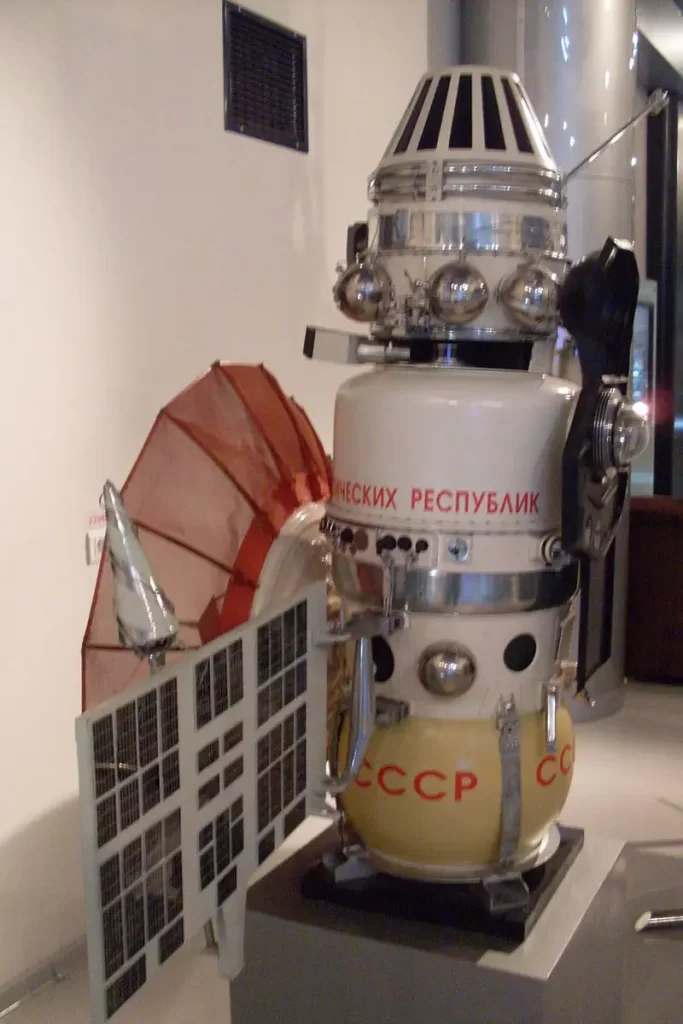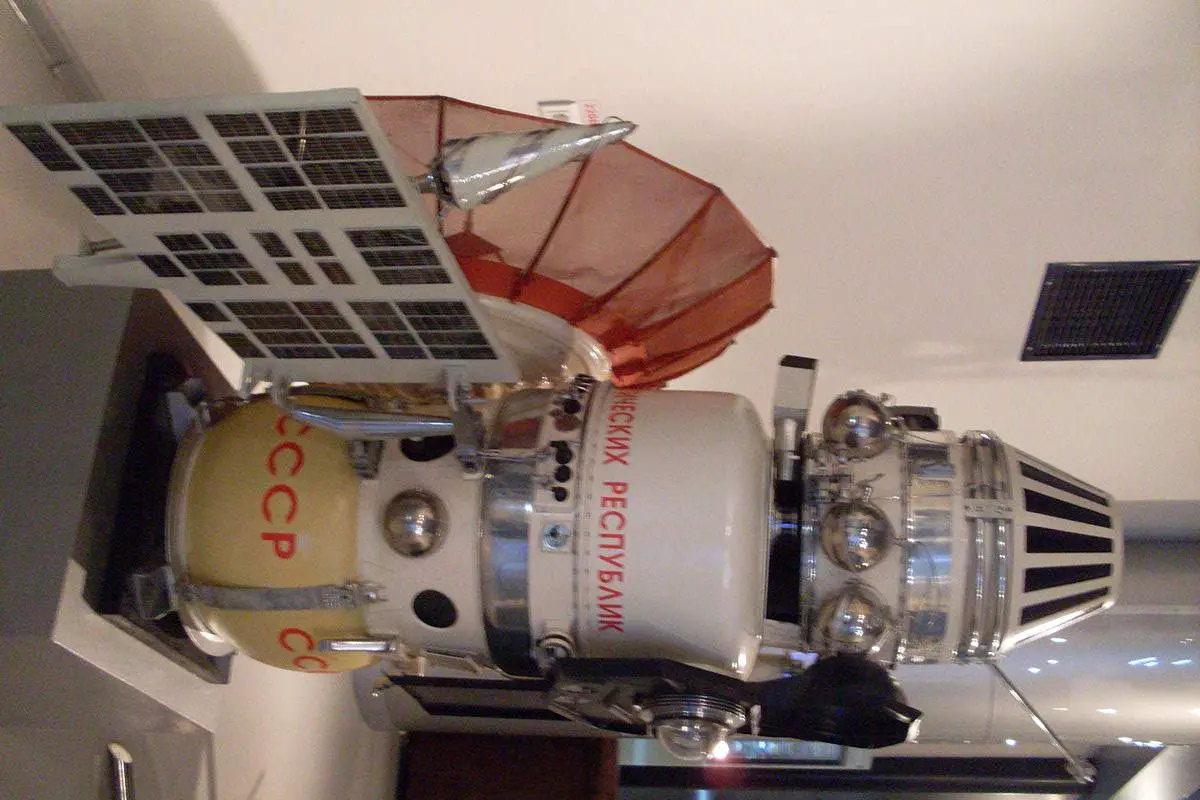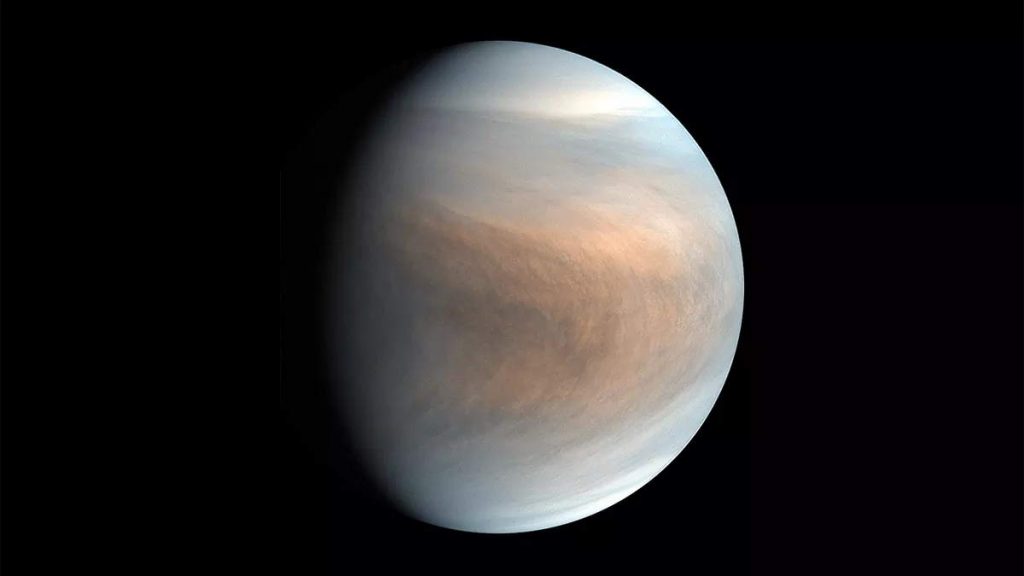On June 12, 1967, the Soviet Union launched Venera 4, which means “Venus 4” in English, a probe in the Soviet Venera program for the exploration of the planet Venus. It became the first successful probe to perform in-place analysis of the environment of another planet.
Today’s (June 12) story of what happened this day in Science, Technology, Astronomy, and Space Exploration history.
Venera 4
Venera 4 was the first Venus probe built by the Lavochkin design bureau, which was founded in 1937. The engineers retained the basic design layout of the earlier 3MV probes built under Chief Designer Sergei Korolev (1907-1966), the lead Soviet rocket engineer and spacecraft designer during the Space Race between the United States and the Soviet Union.

After a mid-course correction on July 29, 1967, Venera 4 approached Venus on October 18, 1967. About 2 hours before arrival at Venus, at a distance of 27,962 miles (45,000 kilometers), on command from Earth, the spacecraft was properly oriented for entry.
The same day, on Octobe 18, the 11.5 feet (3.5 meters) high descent vehicle (main bus) of the Venera 4 spacecraft entered the Venusian atmosphere at a velocity of about 7 miles per second (11 kilometers per second) and became the first spacecraft to transmit data from another planet’s atmosphere. It returned data for some time before being burned and destroyed in the atmosphere.
The spacecraft has also consisted of a 844-pound (383-kilogram) lander probe designed to transmit data as it descended through the Venusian atmosphere. This capsule could endure loads as high as 300 g’s and land on both land and liquid.
The lander indeed experienced as much as 300 g’s as predicted and reduced its speed to 689 feet per second (210 meters per second), at which point the parachute system was deployed. Simultaneously, it began to transmit information back to Earth.
Venera 4 data was analysed together with the data of the Mariner 5 probe, under a combined Soviet-American working group of COSPAR in 1969, an organization of early space cooperation. The data revealed that Venus was extremely hot, that its atmosphere was far denser than expected, and that it had lost most of its water long ago.
Soviet scientists initially believed that the probe transmitted until contact with the surface, announcing that “a calculation of the rate of descent of the station until termination of transmission of data indicates that it continued transmitting until it actually touched the surface of the planet.”
Later analysis of data, however, showed that transmissions ceased at an altitude of about 17 miles (28 kilometers) when the high atmospheric pressure and temperatures damaged the probe. The inert probe impacted the surface near 19 degrees north latitude and 36 degrees east longitude.
The data implied that surface temperatures and pressure were 932 degrees Fahrenheit (500 degrees Celsius) and 75 atmospheres respectively.
Venera 4 mission’s importance was underscored when NASA Administrator James E. Webb (1906-1992) issued a statement on October 18, 1967, noting that the landing “represents an accomplishment any nation can be proud of.”
Researchers at NASA Ames Research Center were particularly interested in data from Venera 4, especially the effect of planetary atmosphere on the propagation of radio signals from the spacecraft, in anticipation of future NASA missions to Venus.
Later, the first successful soft landing on Venus was achieved by the Venera 7 spacecraft on December 15, 1970.
Sources
- Venera 4 on Wikipedia
- Venera 4 on the NASA Solar System Exploration website
- “Venera 4, the first spacecraft to return data about the atmosphere of Venus” on the European Space Agency (ESA) website
- Space Shuttle Endeavour’s Touchdown Meets Columbia’s Salute [An amazing photo from the past] - February 29, 2024
- Moon Landings: All-Time List [1966-2024] - February 23, 2024
- From Orbit to Ordinary: 10 Earthly Applications of Space Technology - January 23, 2024

